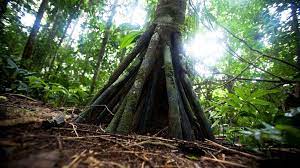These Ecuadorian palm trees travel 20 meters yearly; Learn more
Growing up, we were taught that trees are rooted in the ground and some may survive for up to 1,000 years. With their roots firmly planted, they expand in size as a means of obtaining water and nutrients from the earth. But did you know that they can also move?
According to a BBC story, palm trees in Ecuador’s capital Quito migrate 20 meters per year. Peter Vrsansky, a paleobiologist from the Earth Science Institute of the Slovak Academy of Sciences in Bratislava, claims to have seen this occurrence first-hand during his excursion to the Ecuadorian jungle. A paleobiologist investigates how biological life has changed through time.
This tree’s scientific name is Socratea exorrhiza. The tropical jungles of Central and South America are home to these palm plants. The majority of them may be found in Ecuador’s Sumaco Biosphere Reserve, which is 100 kilometers from Quito.
In order to find stable ground following soil erosion, these trees produce new, extended roots, according to Peter Vrsansky’s explanation of the movement. These palm trees often end up migrating 20 meters from their original location in their hunt for a firm base. The expert was reported by the BBC as saying, “Then, gradually, as the roots settle in the new soil and the tree bends patiently toward the new roots, the old roots slowly lift into the air.” According to Peter Vrsasky, the whole search for a suitable location with stable ground and enough sunshine might take many years.
The scientific world has been debating these walking palm palms for a while. The movement of this tree, according to biologist Gerardo Avalos, head of the Center for Sustainable Development Studies in Atenas, Costa Rica, is a fiction. His published journal demonstrates that the tree’s roots don’t move. The tree’s trunk may die off on one side, yet it will always be in the same place. The expert said during his interview with the Life’s Little Mysteries podcast that these tales are only made up by tourists to entertain those who visit the jungle.







